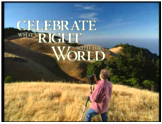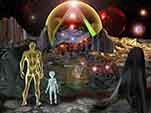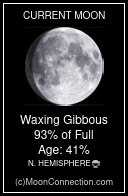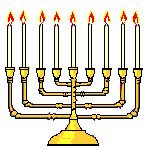http://www.ratical.com/ratville/Tecumseh.html
Article: 1100 of sgi.talk.ratical
From: dave@sgi.com (dave "who can do? ratmandu!" ratcliffe)
Subject: PANTHER-ACROSS-THE-SKY: Tecumseh & the New Madrid Earthquake, December,
1811
Summary: biography of Tecumseh & his prophecy of most violent N.American quake
Keywords: New Madrid, ILL earthquake--biggest in N. American recorded history
Date: 25 Jun 1995 23:06:02 GMT
Organization: Silicon Graphics, Inc.
Lines: 710
another remarkable compilation of the "forgotten past", thanks to David Yarrow
This true story reveals a hidden dimension to American History and Geology
which shakes not only the earth, but our very rational conceptions of the
relationship between Science and Spirit, between Geology and Gaia. This is
what I call "Herstory," and it is covered up because it forces us to confront
certain political, racial and spiritual realities that are embarrassingly
inconsistent with official dogmas. Yet, any thoughtful person must give a
long pause to contemplate the implications of this untold tale.
What might any geologist give to know how Tecumseh was able to predict
with such accuracy? Most likely, what a geologist would have to sacrifice
are his own sacrosant beliefs in the separation of Science and Spirit.
PANTHER-ACROSS-THE-SKY
Tecumseh and the New Madrid Earthquake
/* written 11pm 11/8/91 by David Yarrow */
"The story you are about to be told is true...." Indeed, the three reponses to
this topic are exerpts taken from "The Frontiersmen," an authentic historical
novel describing how the white man took the Ohio Valley and Kentucky
from the Indians. The events they describe are also recorded in several other
authentic historical novels, one of which is the biography of Tecumseh
entitled "Panther-Across-the-Sky," which, unfortunately, I've not had the
opportunity to read yet.
When I studied Earth Science, I learned about the New Madrid earthquake
-- the most violent and destructive tremor ever to strike North America in
recorded history. Centered in New Madrid, Illinois, where the Ohio and
Missouri rivers meet the Mississippi, this massive quake severely shook the
entire eastern half of the continent. Chimneys fell all the way up in Maine
from this one. And it wasn't merely a single quake, but a series of them
spanning a period of four months.
The New Madrid quake is especially intriguing not only because of its
unparalleled power, but also because it occurred in an area which is
normally devoid of tectonic activity, including earthquakes. The implication
is that this monster quake originated far deeper in the North American
crust than is usual for an earthquake.
When I studied American History, I learned about William Henry Harrison,
a U.S. military leader on the western frontier who had to confront the great
Indian leader Tecumseh, who tried in a prolonged process of diplomnacy to
unite the Indian tribes into a grand confederacy. Although Harrison never
actually fought Tecumseh, he later went on to be elected President of the
United States, largely on the strength of his reputation as a frontier Indian
fighter -- a warrior image that continues to hold great charisma in the
American psyche. Tecumseh, too, was portrayed in my history lessons as a
great and powerful warrior, whereas he was in truth a diplomat, a
peacemaker and, most intriguing of all, a prophet.
However, what I was never was taught by either Earth Science of
American History is that Tecumseh didn't merely predicted the New Madrid
earthquake. In truth, Tecumseh didn't merely "predict" this tectonic event,
he actually "prophesied" this greatest earthquake ever to hit the continent.
Tecumseh's prophecy was given many months in advance of the quake,
and was accurate down to the very day it occurred. One of the odd
enigmas of truth hidden under the veneer of American History is that this
quake was actually his signal to the Indians of North America to unite in an
army and drive the invading, land stealing whites off the continent.
This true story reveals a hidden dimension to American History and Geology
which shakes not only the earth, but our very rational conceptions of the
relationship between Science and Spirit, between Geology and Gaia. This is
what I call "Herstory," and it is covered up because it forces us to confront
certain political, racial and spiritual realities that are embarrassingly
inconsistent with official dogmas. Yet, any thoughtful person must give a
long pause to contemplate the implications of this untold tale.
What might any geologist give to know how Tecumseh was able to predict
with such accuracy? Most likely, what a geologist would have to sacrifice
are his own sacrosant beliefs in the separation of Science and Spirit.
+ - - - - - - - - - - - - - - - - - - - - - - - - - - - - - +
for a green and peaceful planet for the Seventh
Generation
David Yarrow at Turtle EyeLand
c/o Broeckx, P.O. Box 6034, Albany, NY 12206
dyarrow@igc.org 518-426-0563
http://www.danwinter.com/yarrow
Eve, the earthworm sez: If yer not forest, yer against
us.
+ - - - - - - - - - - - - - - - - - - - - - - - - - - - - - +
PANTHER-ACROSS-THE-SKY
Tecumseh and the New Madrid Earthquake
Part One: Tecumseh's Birth and Boyhood
[The following narrative is taken from The Frontiersman by Allan W.
Eckert (© 1967). In the Author's Note, Eckert wrote: "This book is fact, not
fiction. Certain techniques normally associated with the novel form have
been utilized, but in no case has this been at the expense of historical
accuracy. In no case has there been any 'whole cloth' fabrication or fanciful
fictionalization. Equally, every incident described in this book actually
occurred; every date is historically accurate; and every character, regardless
of how major or minor, actually lived the role in which he is portrayed."]
Wednesday, March 9, 1768
As he had done on occasion ever since childhood, the Shawnee chief
Pucksinwah contemplated the multitude of stars sparkling with such life
and beauty in the deep cloudless and moonless sky. Now that the fire had
died to a dim orange bed of coals and the women squatted around it had
lapsed into uncommon silence, these jewels of the night seemed to draw
even closer and become more tangible, as if waiting to be plucked.
Only rarely was the stillness broken by a soft cry from within the hastily
erected shelter beyond the fire where Methotasa --
A-Turtle-Laying-Her-Eggs-in-the-Sand -- waited delivery of her child. It
would have been better had they been able to continue the journey to
Chillicothe. The village was only three arrow flights to the northwest of
them, but the time to bear fruit had come and further travel, however
short, would have been dangerous to both Methotasa and the infant.
Though extremely anxious to reach this principal town of the
Chalahgawtha sept, Pucksinwah nevertheless stayed behind with his
12-year-old son, Chiksika, and 10-year-old daughter, Tecumapese, along
with half a dozen women of his clan who would help in the delivery. The
remainder of his Kispokotha sept of the Shawnees he sent on to the village
with word of his whereabouts and his promise to appear on the morrow at
the large msi-kah-mi-qui, or council house.
Nearly 600 strong, these followers of his represented about two-thirds of
the population of Kispoko Town on the west bank of the Scioto River.
Similar groups from the other four Shawnee septs were also converging for
this highly important council at Chillicothe. For over five years tribal
representatives had been meeting here at intervals in an effort to decide
what the Shawnees, as a nation, must do about the white man who,
despite those treaties forbidding it, was crossing the mountains to the east
and spilling into the valleys of the Monongahela and Youghiogheny and
Allegheny.
Although the Shawnee septs were individual entities and governed
themselves, each was an important branch of the Shawnee tribe as a
whole, and each had a distinct office or duty to perform for the benefit of
the tribe. The Peckuwe sept, for instance, had charge of the maintenance
of order or duty, and looked after the celebration of matters pertaining to
Shawnee religion. It was to this sept that Methotasa had belonged before
Pucksinwah had taken her as wife.
The Maykujay clan controlled matters pertaining to health, medicine and
food. The Kispokotha sept, on the other hand, was in charge of all
circumstances of warfare, including the preparation and training of
warriors.
But the two most powerful septs were the Thawegila and Chalahgawtha,
which had charge of all things political and all matters affecting the entire
tribe. These two septs were equal in power, and from one of them the
principal chief of the Shawnees had to come. The chiefs of the other septs
were subordinate to the principal chief in all matters of importance to the
tribe but, in circumstances pertaining to their own jurisdiction, they were
independent chiefs. The Thawegila, Kispokotha and Peckuwe septs were
closely related morally and politically, while the Maykujay and
Chalahgawtha septs always stood together, as they had in times past
during occasional instances of tribal dissension.
So it was now in this problem of the encroachment of the whites. It was
such a serious problem that strong lines of dissension had formed which
threatened to cause a permanent breach in the nation; at least so it was
feared by the principal chief, Hokolesqua -- Cornstalk -- a Chalahgawtha
Shawnee. His sept and the Maykujays took the stand that "we had better
make peace with the white people, as they are outnumbering us and
increasing fast. It seems Moneto -- God -- is with them. Let us make peace
with them and be always in peace with them.
"No!" said the Thawegila, Kispokotha and Peckuwe chiefs. "Let us not
make peace with the white people. Let us fight them until one or the other
of us is destroyed to the last man."
Pucksinwah shook his head sadly. To the very marrow of his bones he
knew there could never be a true peace between whites and Indians. As
surely as summer follows spring, the whites would not stop at the river
valley of western Pennsylvania. Inevitably they would spread down the
Spay-lay-wi-theepi -- Ohio River -- to settle in the great and sacred
hunting grounds of Can-tuc-kee. The Shawnees from the north and
Cherokee from the south might share the bounty of that land below the
great river, but no tribe -- nor white man! -- must be permitted to take up
permanent residence there.
Had not over a century of friction between Indians and whites proven that
nothing could be gained by talk of peace? When treaties had been signed
and boundaries established in the past, had not these whites treated the
Indians with unfeigned loathing, and had they not broken the boundaries
almost immediately after they were established?
This was why the current council at the Little Miami River village of
Chillicothe was so important to Pucksinwah. Largest of the Shawnee towns,
it was centrally located to all the septs and more than 5000 Shawnee men
would be on hand. And this time it would be his turn to speak without
interruption in the msi-kah-mi-qui. He would pray to Moneto to bring
powerful words to his lips that he might convince the Chalahgawtha and
Maykujay septs that there could never exist an suitable peace between
Indians and whites.
He raised his eyes skyward, but the prayer died aborning as a huge
meteor suddenly plunged into the atmosphere and burst into brilliant
greenish-white flame. It streaked across the heavens from the north in an
awe-inspiring spectacle which lasted fully twenty seconds.
Pucksinwah had heard of such occurrences, but not before had he seen
anything so breathtaking as this, and the tales of the old people came
back to him now: this shooting star was The Panther, a great spirit passing
over to the south where it seeks a deep hole for sleep. Every night it passes
somewhere on the earth to go to that home in the south. It was a good sign
indeed, and Pucksinwah arose and stepped briskly to the fire where the
women were clustered, chattering excitedly, for they too had seen it.
From within the temporary shelter came the sharp wail of a baby.
Pucksinwah waited quietly, the murmur of voices from inside almost lost in
the gurgle of water from the great bubbling spring beside the shelter. Soon
the infant's crying faded away, and a quarter hour later one of the women
came out, beckoned to the chief, and happily told him he had a son.
Pucksinwah stooped to enter the shelter and the three women inside,
giggling delightedly, left to join the others at the fire. Methotasa lay on a
bedding of cedar boughs covered with a huge buffalo hide, the even softer
hide of a deer covering her to the waist. Her breasts were swelled, but not
yet heavily engorged with the milk which would come in two or three
days. In the crook of her arm slept the newborn child, its skin glistening
faintly with a protective coating of bear oil applied by the squaws.
Methotasa smiled up at Pucksinwah as he knelt to look at the baby. She
told him that the other women had seen a great star, The Panther, passing
across and searching for its home in the south. Pucksinwah nodded gravely,
and told her it was the boy's unsoma.
Shawnee custom declares that a boy baby is not named for ten days after
his birth, nor a girl for twelve, during which time an unsoma -- notable
event -- would occur which should indicate what Moneto wished the child
to be called. But this time the sign had been given at the very moment of
birth, and this was of great importance. Both Pucksinwah and Methotasa
knew there could be no other name for this boy that
The-Panther-Passing-Across.
Thus was born and named the Shawnee Indian known as Tecumseh.
Sunday, April 13, 1788
"Little brother," Chiksika had said yesterday,placing his had on Tecumseh's
shoulder,, "what I say now will come to be. Just as our father knew that he
should die in that battle with the Shemanese where the Kanawha and
Spay-lay-wi-theepi meet, so I know that I will die tomorrow during the
midst of our little battle. When the sun is at its highest, then will a bullet
from the whites strike me here," he placed a finger to his forehead midway
between his eyes, "and my life will be ended. But do not let them falter.
Lead them on with an attack at once, and they will emerge victorious."
And now, as they rode toward the frail fortification behind which the
whites lay, a devastating sorrow drained Tecumseh of strength and will as
he followed Chiksika wordlessly toward the destiny his older brother had
predicted.
Tecumseh wished he could disbelieve his 31-year-old brother's prediction,
but he could not. How many times in the past had Chiksika predicted
exactly what would happen and when? Too many times to count. Even on
the trip south they had laughed together when Chiksika had told
Tecumseh that though he was a better hunter than himself or any other of
the dozen Kispokotha warriors with them, in three days he would fall from
his horse and break his hip as he attempted to down a buffalo. But it had
happened just as he said. Two months ago, they had charged a small herd
and Tecumseh had thundered up beside the largest bull, prepared to strike,
when the animal's shoulder had bumped his horse, throwing it off stride.
The horse had slipped and fallen, throwing Tecumseh from its back, and he
had lain there filled with admiration for Chiksika's prophetic ability, even as
the waves of pain from the broken hip throbbed through him.
And then, last night Chiksika had told Tecumseh of his presentiment, and
abruptly the world had become cold and hard and alien. So sorrowful at
Chiksika's prediction was he that Tecumseh scarcely heard his older
brother's further prediction.
"Tecumseh," he said, "you must carry on for our people and become for
them a leader. You will do this, I know. I have looked ahead and seen you
not only as a leader of the Shawnees, but as the greatest and most
powerful chief any tribe has ever known. I have seen you journey to far
lands and I have watched you bring together under your hand a
confederation of Indian nations such as has never before been known."
But Tecumseh fond little comfort in the words. His own mind was filled with
words that would never be spoken and his heart with a pain that would
never be eased. He vowed to stay by his brother's side during the
engagement.
The fight began late in the forenoon, and it was a hot one, the whites
defending their little stronghold with unexpected tenacity. Only gradually
were the settlers picked off and the Indians able to slowly advance. The
Cherokee chief three times led a charge, and three times had been forced
to retire, but each time less emphatically than the last. Now, out of effective
rifle range, he stood high and called his tribesmen and Shawnee friends to
rally behind him for a final charge that would bring them victory.
Chiksika unexpectedly placed his had over Tecumseh's and squeezed it. He
pointed to a hickory sapling, its branches bare but for swelling buds. It stood
arrow straight in the ground and the sun made the shadows of the
branches a spiderwork pattern on the ground about the trunk, but there
was little trunk shadow, for the sun was at its zenith.
"Happy am I," Chiksika said softly, "to fall in battle and not die in a
wegiwa like an old squaw."
He and his younger brother then joined the Cherokee chief and suddenly,
even before the sound of the distant shot came, there was a heavy
thunking sound and Tecumseh whirled to see Chiksika just beginning to
topple sideways, a hole nearly the diameter of his thumb between his
brother's eyes in the middle of his forehead. Tecumseh leaped forward and
caught him and gently lowered him to the ground. As he did so, the
Cherokee chief exhorted his men to charge the whites, but they were
shocked at the bullet having traveled so incredibly far and so accurately to
kill their northern ally and considered it a bad sign. Even though Tecumseh
begged them to charge again, telling them that Chiksika had said they
would win and that he would lead them beside their chief, they refused to
fight more.
As the entire party withdrew, Tecumseh's shoulders slumped far more with
the weight of sorrow than with the weight of his brother's body in his arms.
Part Two: Confederacy & Prophecy
Wednesday, August 11, 1802
Each time Tecumseh addressed one of these councils, he felt a great
exaltation as he saw how his words caught and held his listeners; how
easily, with the proper turn of a phrase, he could stir in them emotions of
anger and hate, love and pleasure, regret and sorrow. Each time he began
to speak, he was never really sure exactly what he would say, but then the
words came to him, rolling fluently from his tongue and never failing to stir
deeply all who listened.
He was much pleased with the way things had gone thus far. All during
spring, summer and fall of last year he had gone from village to village,
journeying as far eastward as western Vermont and Massachusetts. This
past spring, as soon as he had concluded the laughable treaty with the
cut-ta-ho-tha, he had ranged across upper and western New York State
and northwestern Pennsylvania. All of the remaining Iroquois Confederacy
had been deeply inspired by the plan, and they looked upon the speaker
with something very akin to reverence. They had pledged their faith and
their secrecy and, most important, their help when the great sign should be
given.
This great sign that Tecumseh spoke of wherever he went always
remained the same, and his telling of it never failed to awe his audiences.
When the period of waiting was over, he told them, when tribal unification
had been completed, when all was in readiness, then would this sign be
given: in the midst of the night the earth beneath would tremble and roar
for a long period. Jugs would break, though there be no one near to touch
them. Great trees would fall, though the air be windless. Streams would
change their courses to run backwards, and lakes would be swallowed up
into the earth and other lakes suddenly appear. The bones of every man
would tremble with the trembling of the ground, and they would not
mistake it. No! There was not anything to compare with it in their lives, nor
in the lives of their fathers or the fathers before them since time began;
when this sign came, they were to drop their mattocks and flash scrapers,
leave their fields and their hunting camps and their villages, and join
together and move to assemble across the lake river from the fort of
Detroit. And on that day they would no longer be Mohawks or Senecas,
Oneidas or Onondagas, or any other tribe. They would be Indians! One
people united forever where the good of one would henceforth become
the good of all!
So it would be!
Sunday, December 1809
The watchword of the year was suspicion. Everyone, it seemed, was
suspicious of something.
Despite all the suspicions in the air, the year closed without open hostilities
erupting anywhere. The United States, under its new President, James
Madison, continued to be suspicious of the British. William Henry Harrison
continued to be suspicious of Tecumseh and the Prophet. Many of the
Indian chiefs continued to be suspicious of the amalgamation of the tribes.
Tecumseh continued to be suspicious of the growing insubordination of his
brother, Tenskwatawa, the Prophet. The settlers continued to be suspicious
of all Indians. And Tenskwatawa continued to be suspicious of everything
and everybody.
The Prophet's work in helping to unite the tribes behind Tecumseh's
movement was, on the whole, a big disappointment to Tecumseh. These
tribes -- the Delawares, Miamis, Wyandots, and, in particular, the
Shawnees -- must be convinced to join. Without their active support, the
entire grand plan might collapse. Yet, instead of uniting them,
Tenskwatawa had succeeded only in alarming them and driving them
away with talk of immediate attack on Vincennes and the river
settlements, and by his suggestions that the Great Spirit would destroy any
who did not join in to help. It was a maddening development and, before
he set out again to visit each of these chiefs, Tecumseh held long conferences
with his younger brother and gave him strict orders to follow.
Tenskwatawa was to begin immediately to regain some of the prestige he
had lost during the year. He would retire alone to the woods and there
make a large number of sacred slabs which he was to tell the assembled
Indians he had made under the direction of the Great Spirit. The directions
for their construction was specific.
Each slab was to be of the same length, thickness and taper, and each was
to have carved , on one side only, the same symbols. The slabs were to be
made of red cedar and each was to be accompanied by a bundle of thin
red sticks. Each of the red sticks was to represent one moon, and, when the
bundle and slab was given to a particular chief, he would be directed to
throw away one of the red sticks at each full moon until only the slab itself
remained, at which time he must prepare for the great sign to be given.
The symbols on the slab were to have a double meaning -- one to tell any
curious whites who might see them, the other to be the true meaning. For
the whites, these were to be described as heaven sticks -- symbols which
would guide them to the happy Afterlife. The symbols, reading from
bottom to top, were family, which was the most important single factor in
everyday Indian life, the earth upon which they lived, followed by the
principal features of the earth: water, lightning, trees, the four corners of the
earth, corn, fowl and animals of the earth and air, all plant life, the sun, the
blue sky and all of these things having to be experienced and understood
before the people could reach the uppermost symbol, Heaven.
The actual meaning of the symbolism, however, was considerable different
and much more menacing. It was for all the Indians on both sides of the
Mississippi River -- to come in a straight direction toward Detroit at lightning
speed with their weapons; coming from the four corners of the earth,
leaving behind the tending of the corn or hunting of game or storing of
grains to become united when the great sign was given so that all the tribes
might, in one movement, by peaceable means if possible, but by warfare if
necessary, take over the place of the whites which had been usurped from
them.
Wednesday, August 28, 1811
To each of the southern tribes he visited, Tecumseh presented a sacred slab,
along with a bundle of the red sticks. But where once these stick bundles
had been large, now they were unusually small. The one he had given the
Cherokees a few weeks ago when they had agreed to assemble under his
leadership had only four sticks. And when, three days ago, he had
concluded his talks with the Seminoles, their bundle had contained only
three sticks.
Everywhere he went he was listened to eagerly. His fame had spread far;
few indeed were those who could not relate exploits of the great Shawnee
chief, Tecumseh, or who failed to be impressed deeply by the scope of his
amalgamation. Thus, they readily pledged themselves to join him when the
great sign came. Along with the Cherokees and Seminoles and Lower
Creeks, there were the smaller and more scattered tribes -- the Santee and
Calusas and Catawbas and the slightly larger Choctaws and Biloxis, the
Chickasaws and the Alabamas.
Occasionally one or another of the tribes would require a show of proof
from Tecumseh -- some small sign to show that he was, indeed, under the
auspices of the Great Spirit. In most cases, minor prophecies sufficed, such as
in the case of the Seminoles. When they had hesitated to join him, he told
them that in two days there would come to Florida's coast an ocean vessel
which would be filled with arms and supplies for the Seminoles. They
assembled at the point he indicated, and at dawn on the given day, they
discovered a British ship at anchor in the bay and its smaller boats coming
ashore laden with gifts of guns and powder and tomahawks, cloth and
jewelry and foodstuffs. There was no further hesitancy among the
Seminoles to join Tecumseh.
Now the great Shawnee leader was beginning his swing northwestward
through the Alabama country to seek the important alliance formation
with the powerful Upper Creek nation. From there he would move west,
heading into the Mississippi land and Louisiana, then again northward on
the west side of the mother of rivers to Missouri again. And along the way,
he would stop to win over the Natchez and Yazoo, the Tawakonias and
Caddos and others.
But first the Upper Creeks. Big Warrior, principal chief of the Upper Creeks,
listened with a disapproving frown as Tecumseh told his people of his great
plan, its near culmination and the part he wished them to play in it. There
could be no doubt of his jealousy of this Shawnee who could come from
(PLEASE USE LINK)






































